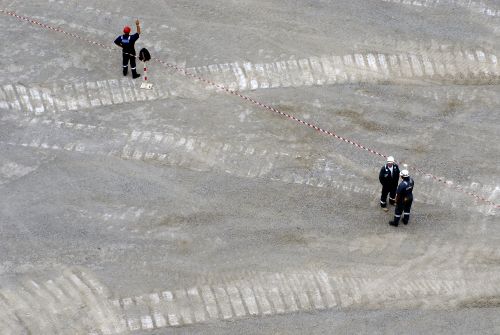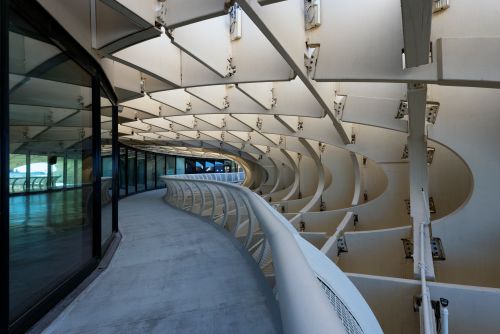849

Nothing can be done without money, and even more so, nothing can be built without funding, which is usually three times larger than the initial estimate. One of the mistakes made when a beneficiary prepares a cost estimate to propose to a contractor is not taking into account the expenses related to the organization of the construction site. Therefore, in this edition, we offer you some tips on sizing and using the funds designated for this purpose as efficiently as possible.
Site Organization Fund
The technical-economic documentation for site organization works is approved by the governing body of the construction-assembly organization, not by the investment beneficiary. The value of the site organization funds due to the contractor for the entire funded work is negotiated between the contractor and the beneficiary.
The organization fund is made available to the general or specialized contractor or subcontractors as needed for the execution of the works and incurring expenses, based on the schedule of amounts allocated to the brigade for the entire work and annually.
In cases where works and organization expenses are spread over several years, at the beginning of each year, the financing banks, together with the beneficiaries and construction-assembly organizations, analyze the volume and annual distribution of these expenses.
For construction-assembly works carried out in industrial zones or platforms, the organization fund for unique production bases across the entire platform, unique machinery and transport bases, social-cultural annexes, depots, etc., is determined by the coordinator's organization project submitted by the general contractor to the financing bank.
After funding approval for the works, the amounts set out in the organization project are made available by the investment beneficiaries directly to the general contractor based on needs.
How Can the Money Be Spent?
From the organization funds, construction companies have the freedom to carry out the entire range of construction and installation works necessary to ensure the smooth progress of basic works, but they cannot purchase machinery with this money.
In order to use the organization funds as efficiently as possible and taking into account their function, duration of use on the construction site, and location of the organization objects, mandatory criteria have been established regarding the characteristics of the constructions and organization objects. According to these characteristics, the following categories of organization objects are distinguished:
- Permanent: Objects used throughout the normalized duration at the same location;
- Temporary: These can be: demountable, mobile, or fixed; demountable and mobile ones are moved to another site when their function on the respective site is completed, while fixed ones are abandoned or demolished.
Temporary constructions are carried out immediately after the site is opened, based on a prior authorization, and when they no longer serve their purpose, they must be dismantled without requiring a new authorization. To continue using them, either for other nearby basic works or other purposes, a new authorization is required.
Constructions made for site organization that become available can be sold or dismantled, and the contractor is required to inventory the recovered materials and record their value, thus replenishing the organization fund. The resulting savings can be used by concentrating them at the contractor level to create permanent organization objects.
Site Opening and Arrangement
After concluding the Construction Contract and obtaining funding approval for the contracted construction-assembly works, the general contractor proceeds to open and arrange the construction site and issues the Order to commence work.
Before opening the construction site, the general contractor convenes the beneficiary and the designer, who go to the work site so that the beneficiary can hand over, based on a minutes of delivery, the work site and the organization territory, free of any objects or networks that could hinder the execution of the works under normal conditions.
The general designer also provides the main location points and elevation benchmarks materialized on-site. On this occasion, the general designer presents the execution project, providing all necessary clarifications.
To open the construction site, the general contractor takes measures to enable the start of preparatory works (site fencing, site clearance, if necessary, site cleaning, demolition of old buildings on the site of the basic objects, removal of resulting materials, site leveling, etc.). These works must be initiated at the beginning and completed as soon as possible, except for constructions that can serve as organization objects.
After carrying out the main organization works, the contractor delineates the site in preparation for the start of the basic works, recording the actual start of the works at each object separately and specifying the reasons for any delays if applicable. To settle the works, a clear record of the physical progress of the works is prepared.
Organization of Personnel Serving Spaces
Within the areas serving the construction site personnel, the following groups of constructions are included:
- Accommodation constructions and annexes to them (dormitories, canteens, bathrooms, laundries, etc.);
- Social-cultural constructions (clubs, sports fields, kindergartens for the children of site personnel, sanitary points, dispensaries, etc.);
- Administrative constructions (offices, guard and control booths, warehouses and garages for fire protection installations);
- Commercial and service spaces (grocery stores, tobacco shops, post offices, telephone offices, etc.).
The construction of accommodation spaces required for site personnel, as well as those for other social and technical-administrative needs, should primarily be provided through permanent constructions (housing, dormitories, social groups, etc.).
Local temporary use options should be used as intensively as possible, either by taking over or renting existing permanent constructions that meet the social-administrative needs of the contractor.
To reduce the volume of organization works, priority should be given to the basic works of the investment that can be used by the contractor, either in full or in part, as organization objects.




